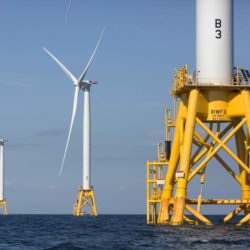
New York City passes bill to expand urban tree canopy, combat climate change
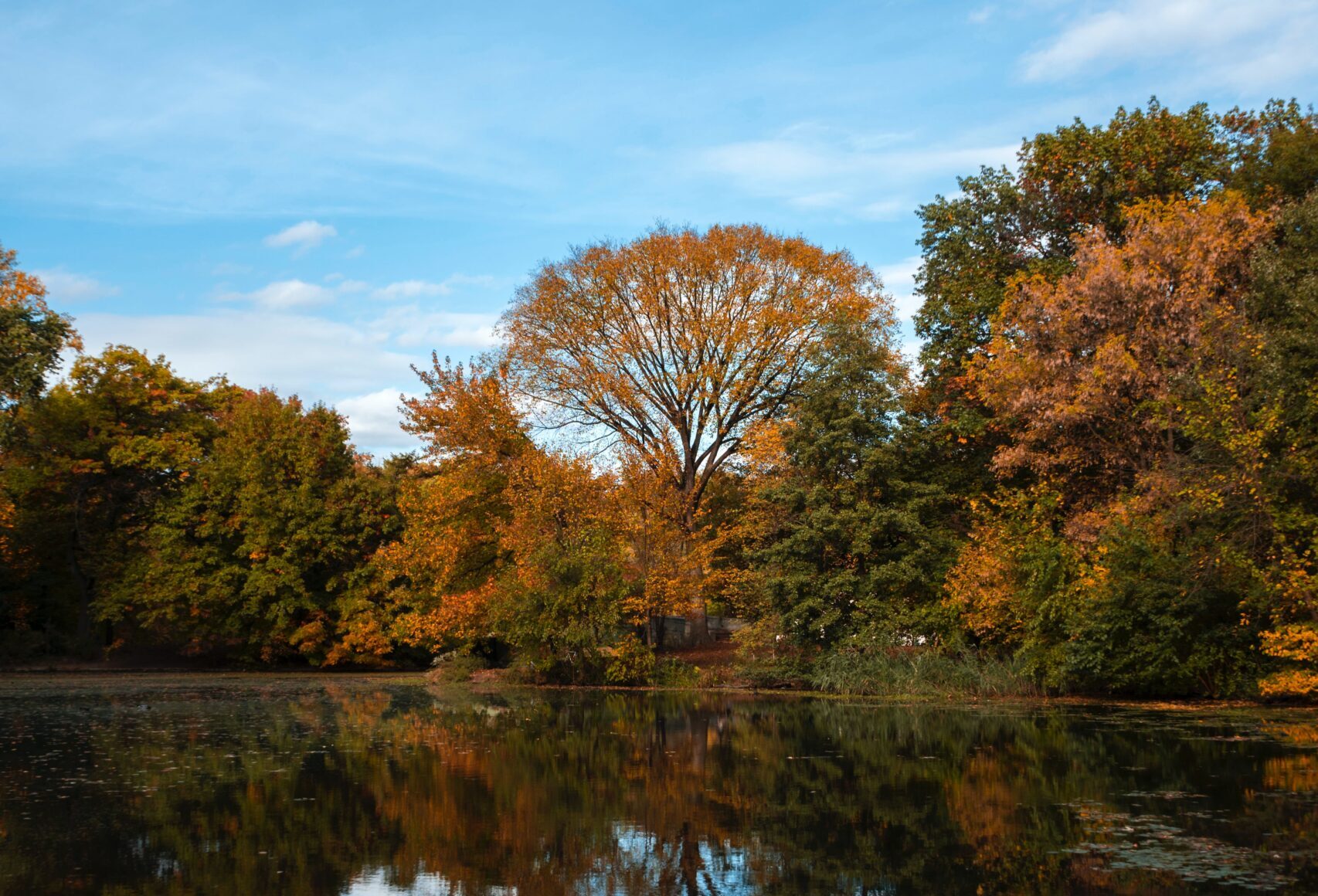
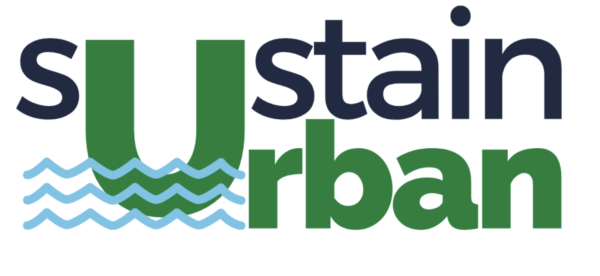 In a move applauded by environmentalists and sustainability advocates, the New York City Council passed on Thursday a groundbreaking bill aimed at expanding the city’s tree canopy cover from its current 22% to an ambitious 30%.
In a move applauded by environmentalists and sustainability advocates, the New York City Council passed on Thursday a groundbreaking bill aimed at expanding the city’s tree canopy cover from its current 22% to an ambitious 30%.
The legislation, officially titled “An Urban Forest Plan,” not only sets forth an ambitious goal for increasing tree canopy coverage but also mandates the creation of a comprehensive urban forest master plan. This master plan, to be submitted to the City Council by July 31, 2024, will play a pivotal role in identifying the causes of urban forest loss and establishing concrete goals to both expand and safeguard New York City’s vital urban forest.
The term “urban forest” encompasses all trees and shade-producing vegetation within the city, including those not under the direct ownership or jurisdiction of the commissioner, as outlined in the bill.
The New York City Environmental Justice Alliance (NYC-EJA), a prominent advocacy group, played a pivotal role in advocating for the passage of Int. 1065. They stressed the significance of equitable distribution of the tree canopy, emphasizing that neighborhoods with more trees and parks experience a range of downstream benefits.
According to a city arborist with the NYC Parks Department, “Urban forests provide a vast swath of benefits like reducing heat island effect, pollution, improve mental health, and provide valuable habitats.”
The heat island effect, an urban phenomenon where built environments absorb and re-emit the sun’s heat, results in urban areas experiencing higher daytime temperatures than natural landscapes. According to the EPA, this can result in urban heat islands experiencing daytime temperatures 1–7°F higher than if the area was a natural landscape. Vulnerable communities, often located in areas with fewer trees, bear the brunt of this phenomenon.
NYC-EJA expressed their support for Int. 1065, stating, “It’s been a really important piece of legislation for us because we want to make sure that we are centering equity when we’re talking about the expansion of the urban forest. We want to ensure that neighbors who haven’t been prioritized are given the attention they deserve, focusing on the communities that need this infrastructure the most.”
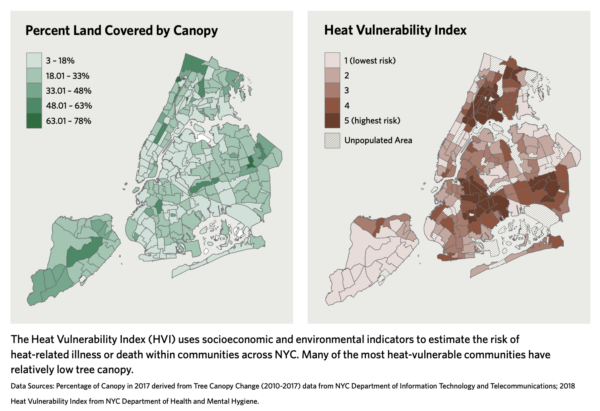
Image: Urban Forest Agenda
Int. 1065 was submitted to the council along with Int. 1066 in June by the NYC Urban Forest Task Force coalition (now renamed Forest For All NYC). Int. 1066, the first of the two bills to be passed, amends Local Law 84 from 2013, establishing a charter for long-term sustainability and resiliency planning. It explicitly includes “the role of trees, tree canopy, and vegetation” in the implementation of sustainability and resiliency programs or policies. Together, these two pieces of legislation position trees at the forefront of New York City’s fight against climate change, marking a significant step toward a more sustainable and resilient future.
Forest for All NYC, a coalition that advocated for these two bills, also released the Urban Forest Agenda, a document containing research and strategies that could help form the master urban forest plan. The Agenda, written with the input of over 40 groups, outlines a plan to achieve 30% canopy coverage, management strategies to maintain the forest, as well as research on the importance of the urban forest.
To celebrate New York’s wonderful urban forest, October 14 is City of Forest Day. Here’s how you can celebrate. Or, learn how to care for the “Lungs of New York” by becoming a citizen pruner, or a tree steward.
Leave a Comment
Related Articles

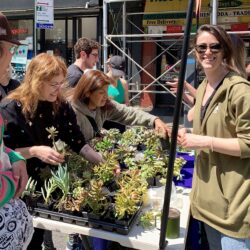
Earth Day weekend 2024 celebrated in Brooklyn

Healthy harbor update: Billion Oyster Project hosts informative fundraiser in exclusive Williamsburg setting

Premium Content
The key to a healthy harbor:
Support of Billion Oyster Project,
and their education program, will
restore city’s harbor, vital shoreline
Leave a Comment
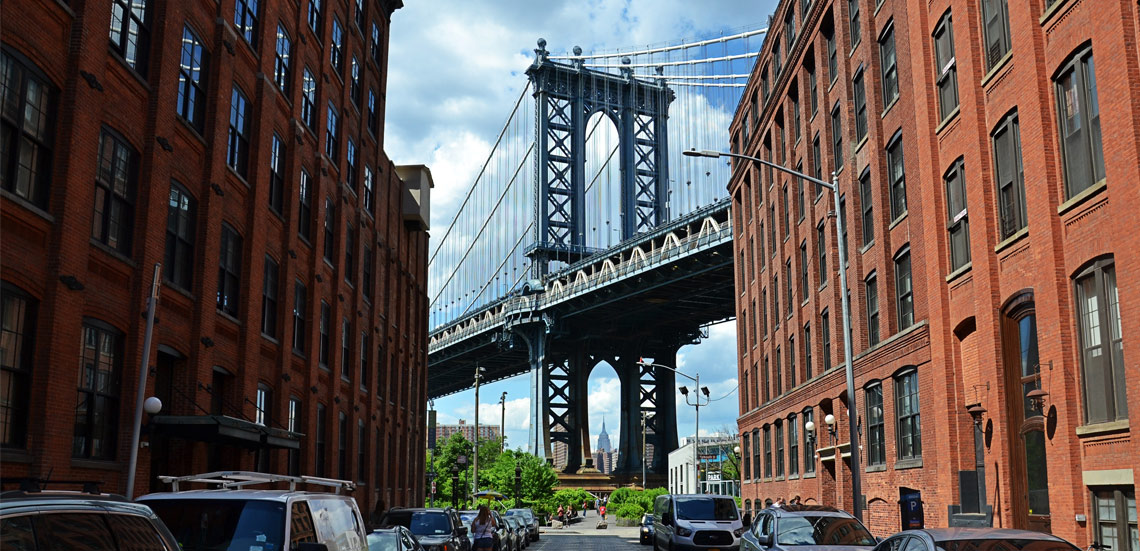
Brooklyn Boro
View MoreNew York City’s most populous borough, Brooklyn, is home to nearly 2.6 million residents. If Brooklyn were an independent city it would be the fourth largest city in the United States. While Brooklyn has become the epitome of ‘cool and hip’ in recent years, for those that were born here, raised families here and improved communities over the years, Brooklyn has never been ‘uncool’.
The Brooklyn Daily Eagle and brooklyneagle.com cover Brooklyn 24/7 online and five days a week in print with the motto, “All Brooklyn All the Time.” With a history dating back to 1841, the Eagle is New York City’s only daily devoted exclusively to Brooklyn.
© 2024 Everything Brooklyn Media
https://brooklyneagle.com/articles/2023/10/10/new-york-city-council-passes-legislation-to-expand-urban-tree-canopy-and-combat-climate-change/
